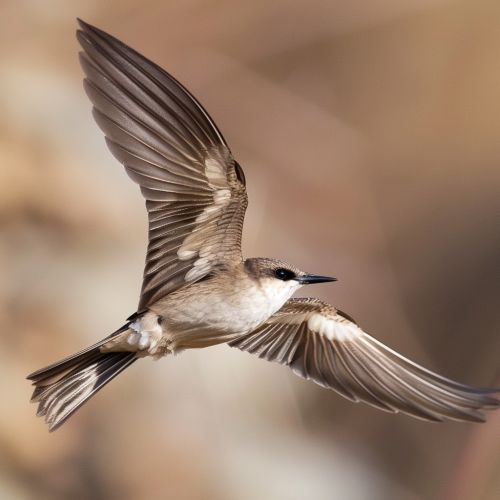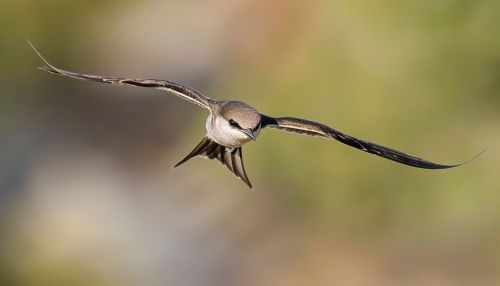Swiftlet: Difference between revisions
No edit summary |
No edit summary |
||
| Line 2: | Line 2: | ||
Swiftlets are a group of small, insectivorous birds in the family [[Apodidae|Apodidae]]. They are renowned for their unique ability to navigate in complete darkness within the confines of their nesting caves, a trait made possible by their use of [[Echolocation|echolocation]], a sensory mechanism more commonly associated with bats. | Swiftlets are a group of small, insectivorous birds in the family [[Apodidae|Apodidae]]. They are renowned for their unique ability to navigate in complete darkness within the confines of their nesting caves, a trait made possible by their use of [[Echolocation|echolocation]], a sensory mechanism more commonly associated with bats. | ||
[[Image:Detail-79057.jpg|thumb|center|A swiftlet in flight, showcasing its streamlined body and long, pointed wings.]] | [[Image:Detail-79057.jpg|thumb|center|A swiftlet in flight, showcasing its streamlined body and long, pointed wings.|class=only_on_mobile]] | ||
[[Image:Detail-79058.jpg|thumb|center|A swiftlet in flight, showcasing its streamlined body and long, pointed wings.|class=only_on_desktop]] | |||
== Taxonomy and Evolution == | == Taxonomy and Evolution == | ||
Latest revision as of 19:27, 16 May 2024
Introduction
Swiftlets are a group of small, insectivorous birds in the family Apodidae. They are renowned for their unique ability to navigate in complete darkness within the confines of their nesting caves, a trait made possible by their use of echolocation, a sensory mechanism more commonly associated with bats.


Taxonomy and Evolution
Swiftlets belong to the order Apodiformes, which also includes swifts and hummingbirds. Within the family Apodidae, swiftlets are classified into the subfamily Collocaliini, which comprises four genera: Aerodramus, Collocalia, Hydrochous, and Schoutedenapus. The taxonomy of swiftlets is complex and has been the subject of much debate, primarily due to the high degree of morphological similarity among species.
The evolution of swiftlets is believed to have been heavily influenced by their unique ecological niche. The development of echolocation, for instance, is thought to have evolved in response to the challenges of navigating in the dark, complex environments of caves.
Morphology and Physiology
Swiftlets are small birds, typically measuring between 9 and 12 cm in length. They possess a streamlined body and long, pointed wings, adaptations that enable them to maintain sustained flight. Their plumage is generally dull, ranging from grey to brown, which aids in camouflage within their cave habitats.
One of the most distinguishing features of swiftlets is their use of echolocation. Unlike most birds, swiftlets produce a series of clicks that bounce off surrounding objects and return to the bird, providing information about the bird's environment. This ability allows swiftlets to navigate in complete darkness, a necessity within their cave habitats.
Behaviour and Ecology
Swiftlets are highly social birds, often forming large colonies within caves. They are primarily insectivorous, feeding on a wide variety of flying insects which they catch in flight. Swiftlets are known for their impressive aerial agility, capable of executing rapid turns and dives in pursuit of prey.
Their nesting behaviour is unique among birds. Swiftlets construct their nests entirely from strands of their own saliva, which harden when exposed to air. These nests are built on the walls of dark caves, often in large colonies. The nests of some species, particularly the Edible-nest Swiftlet, are harvested by humans for use in bird's nest soup, a delicacy in some Asian cultures.
Conservation and Human Interaction
While some species of swiftlets are widespread and abundant, others are threatened by habitat loss and the unsustainable harvesting of nests. Conservation efforts for these species are focused on habitat protection and the regulation of nest harvesting.
Swiftlets have a significant economic importance in some regions due to the trade in edible bird's nests. However, this trade has also led to exploitation and has had negative impacts on some swiftlet populations.
